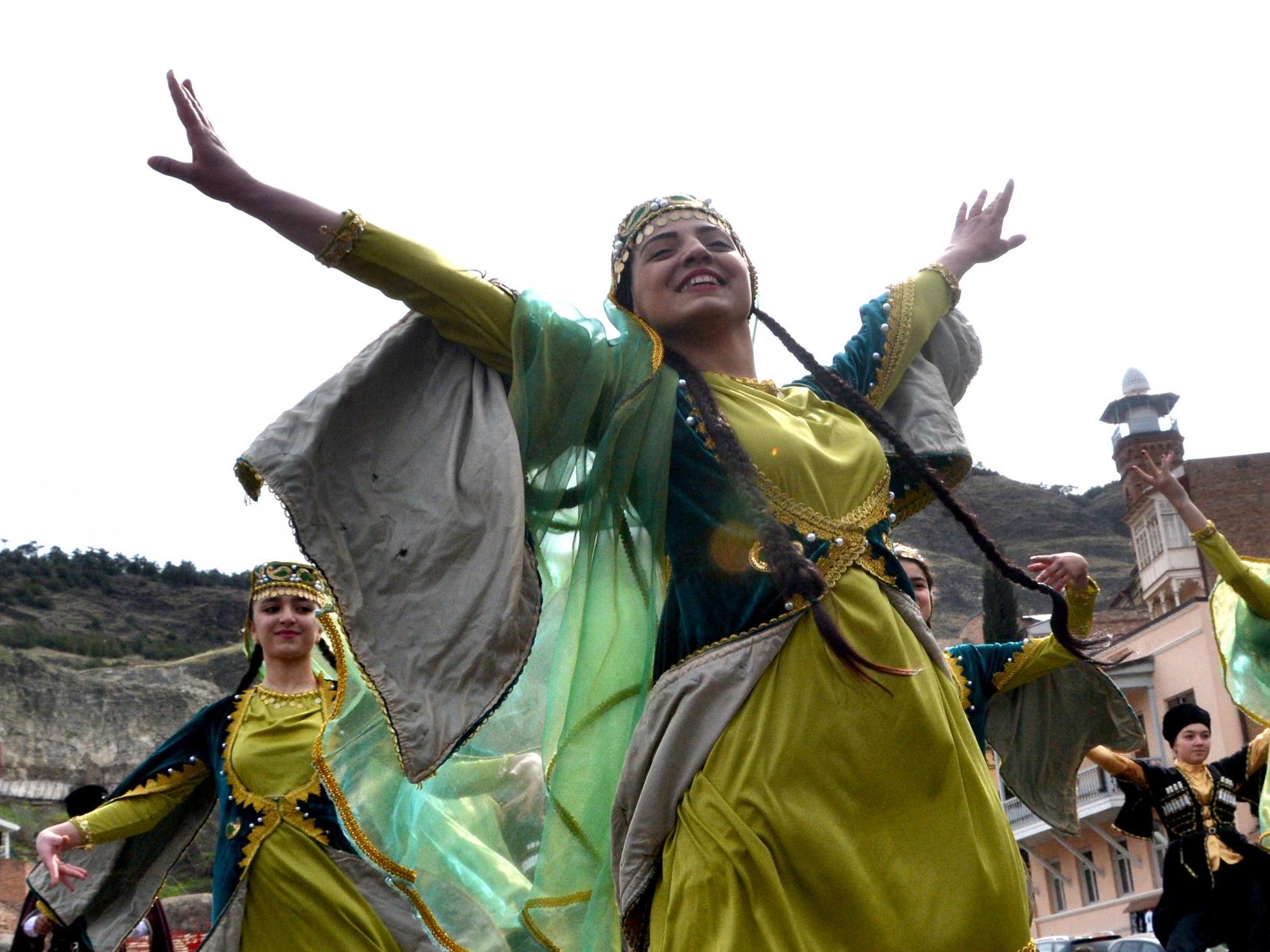Nowruz 2019: When is the Persian New Year and how is it celebrated?
Nowruz festivities date back thousands of years

Your support helps us to tell the story
This election is still a dead heat, according to most polls. In a fight with such wafer-thin margins, we need reporters on the ground talking to the people Trump and Harris are courting. Your support allows us to keep sending journalists to the story.
The Independent is trusted by 27 million Americans from across the entire political spectrum every month. Unlike many other quality news outlets, we choose not to lock you out of our reporting and analysis with paywalls. But quality journalism must still be paid for.
Help us keep bring these critical stories to light. Your support makes all the difference.
As spring arrives in the Northern Hemisphere, so does Nowruz, the Persian New Year.
Observed by millions of people across the globe, the Iranian celebration of spring and new beginnings has been commemorated for thousands of years.
“It promotes values of peace and solidarity between generations and within families as well as reconciliation and neighbourliness, thus contributing to cultural diversity and friendship among peoples and different communities,” the United Nations states.
Here’s everything you need to know about Nowruz:
When is it?
This year, Nowruz is taking place on Thursday 21 March.
It is customary for the festival to occur on this date, or the day before or after, every year in order to coincide with the vernal equinox.
In 2010, the United Nations General Assembly officially declared 21 March as International Nowruz Day.
Nowruz marks the first day of the first month on the Solar Hijri calendar, the official calendar of Iran and Afghanistan.
What’s the history of the event?
Also known as the Iranian New Year, Nowruz has been celebrated for more than 3,000 years in Iran, previously known as Persia, and other countries that were formerly part of the ancient Persian empires.
Translated to mean “new day” in Persian, Nowruz is widely regarded as a secular event that predominantly commemorates the welcoming of spring.
According to archaeology site Ancient Origins, during ancient times, kings in Persia would invite people from across the Persian empire to celebrate the New Year.
Those taking part in the festivities were of different ethnicities and faiths, something that has continued to this day.
The festival has roots in Zoroastrianism, a monotheistic religion which originated in ancient Iran.
Who observes it?
When the UN announced 21 March as International Nowruz Day, it did so at the request of several countries who observe the occasion.
Those countries were Afghanistan, Albania, Azerbaijan, the Former Yugoslav Republic of Macedonia, India, Iran, Kazakhstan, Kyrgyzstan, Tajikistan, Turkey and Turkmenistan.
Nowruz is celebrated by approximately 300 million people around the world, with the aim of strengthening connections between individuals “based on mutual respect and the ideals of peace and good neighbourliness”.
How is it celebrated?
Before Nowruz comes along, it’s custom for those who observe it to clean their house.
This process is known as “shaking the house”, or Khāne-takānī in Iranian.
In addition to participating in spring cleaning in preparation for Nowruz, the festival is also celebrated by visiting friends and family, preparing symbolic foods and street dances.
A Haft-sin table is typically prepared in honour of Nowruz.
This table features seven symbolic items: wheat, a sweet pudding, a Persian olive, vinegar, an apple, garlic and sumac.
One of the major traditions of Nowruz is the ritual of jumping over fires, a practice that’s carried out on the eve of the last Wednesday of the year. This occasion is called Chaharshanbe Suri.
These fires represent “enlightenment and happiness” for the following year, the Iran Chamber Society outlines.
Join our commenting forum
Join thought-provoking conversations, follow other Independent readers and see their replies
Comments